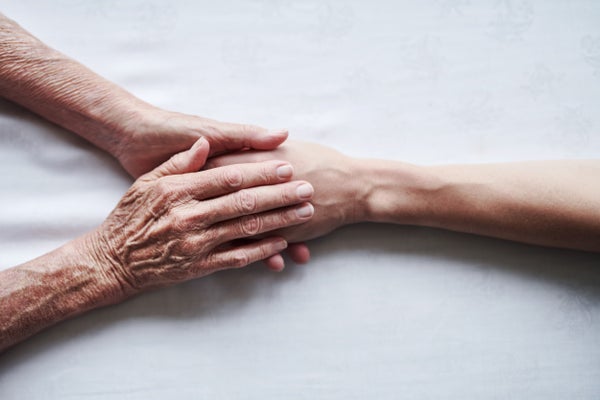This article was published in Scientific American’s former blog network and reflects the views of the author, not necessarily those of Scientific American
Images and videos of college students packing onto beaches and bars last week for spring break portray a picture of young people as irresponsible and selfish during the coronavirus (COVID-19) pandemic. Dig a little deeper, though, and you can find stories of young people who don’t fit that stereotype, like Liam Elkind and Simone Policano. Elkind, a 20-something junior at Yale, and his friend, Policano, created Invisible Hands, a free delivery service to help older New Yorkers and others most vulnerable to the disease.
By extending help at a safe distance, the youth volunteers are also providing human connection. Just as viruses can spread and wreak havoc on the human body, so too stories can become virulent, presenting as effective vectors of essentialist thinking—the belief that members of certain groups (e.g., teenagers, older adults) share an underlying essence that makes them who they are.
People who are inclined to essentialize the social world tend to believe in the reality of social stereotypes, giving greater meaning to features that are only skin deep. According to the developmental psychologist Susan Gelman, when we “essentialize” social groups, we assume that individual differences can be explained by inherent or inborn characteristics shared by members of that group. And newspapers that run stories depicting college students as reckless packages of raging hormones play on essentialist notions of youth.
On supporting science journalism
If you're enjoying this article, consider supporting our award-winning journalism by subscribing. By purchasing a subscription you are helping to ensure the future of impactful stories about the discoveries and ideas shaping our world today.
Such views diverge from the experience of one of us (Anthony Burrow), who studies positive youth development and teaches courses on adolescence and emerging adulthood. Not because essentialist beliefs cast shadows on the decisions young people make, but because they too rarely illuminate what is most promising about young people. What is clear, from our research and that of others, is that most young people possess impressive and far-reaching goals that are often generative and prosocial in nature. They are able to articulate them clearly, when given a chance to do so. And possessing these goals bodes well for their well-being and ability to persist through hardship.
As fears of COVID-19 spread, so too have ageist messages suggesting that the coronavirus is a disease of the old, with internet memes referring to the virus as a ‘boomer remover.’ Studies show that ageism in the form of negative stereotypes is harmful to us all, young and old, but disappears when younger and older adults spend time together. Of course, adults also contribute in numerous ways that benefit society and themselves. Four decades ago, Cornell psychologist Urie Bronfenbrenner famously noted, “Every child needs at least one adult who is irrationally crazy about him or her.” Indeed, research shows that bringing older and younger people together not only provides youth with academic and social support, but also boosts older adults’ mental health, enhancing their feeling of generativity by allowing them to give back to younger generations.
We are living through an unprecedented moment in history. Across the country, schools and universities are urging students and educators to stay home in an effort to “flatten the curve” of the outbreak. But being physically isolated during quarantine doesn’t necessarily mean that feelings of loneliness will follow. Even as we practice physical distancing by substituting in-person activities with safer alternatives, we can still stay socially connected. Increasingly, online tools and services are being designed to offer support and connection and ease feelings of loneliness during isolation.
Efforts to optimize social interactions online may be particularly beneficial in later life, when declining economic resources, illness and impaired mobility result in increased risk for social isolation and loneliness. The good news is that young people, who are quickly taking advantage of these online resources, can help older adults become more tech-savvy. In this generational moment, young and old can each fulfill the role of both student and teacher.
The threats from COVID-19 are real. Anthony Fauci, head of the National Institute of Allergy and Infectious Diseases, told Congress recently that "the worst is yet to come" for the United States. As cases and fatalities swell, millions of Americans are being asked to prepare for a pandemic that could last a year or longer and include multiple waves of illness. Let’s not compound this tragedy by turning a blind eye toward our shared humanity. Instead, if we are to focus on the elements of who we are, let us essentialize our formidable capacity for compassion towards each other.
Read more about the coronavirus outbreak here.
